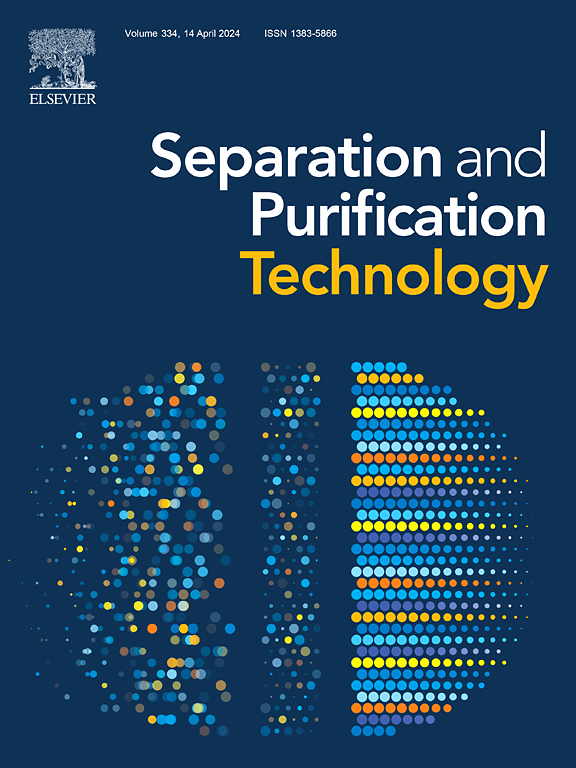Modeling of fluid dynamics in wiped film evaporators during evaporation
IF 8.1
1区 工程技术
Q1 ENGINEERING, CHEMICAL
引用次数: 0
Abstract
This study aims to model and predict the operating behavior of wiped film evaporators with roller wipers. A modular model has been formulated in the modeling language Modelica. The established model considers heat transfer, evaporation, fluid dynamics, and residence time behavior. It is parametrized only on the basis of operational and geometrical parameters, which makes it fully predictive. The apparatus is discretized into a series of height elements with local calculation of fluid properties, heat transfer and fluid volumes. Different heat transfer models were considered for the product side, resulting in a deviation of approximately 25% for the simulated heat flow. The mean residence time can be predicted with 40% compared to experimental results for medium to high flow rates and moderate evaporation ratios. The shape of the simulated residence time distributions generally matches well with the experimental data. Greater deviations at higher evaporation ratios were attributed to possible de-wetting of the heated surface. The model can be used to predict the influence of the main operational parameters and provides a good basis for the design and re-evaluation of wiped film evaporators. Furthermore, it allows valuable insights into the underlying physics of wiped film evaporators. The model may also be adapted to other wiper geometries by modifying some of the included empirical equations.


擦膜蒸发器蒸发过程流体动力学建模
本研究旨在模拟和预测带滚轴雨刷的擦膜蒸发器的运行行为。用建模语言Modelica制定了一个模块化模型。建立的模型考虑了传热、蒸发、流体动力学和停留时间行为。它只在操作参数和几何参数的基础上进行参数化,这使它具有充分的预测性。该装置被离散成一系列高度单元,局部计算流体性质、传热和流体体积。考虑了产品侧不同的传热模型,导致模拟热流的偏差约为±25%。与实验结果相比,在中高流量和中等蒸发比条件下,平均停留时间的预测误差为±40%。模拟的停留时间分布形状与实验数据基本吻合。在较高的蒸发比下,较大的偏差归因于受热表面可能的脱湿。该模型可用于预测擦膜蒸发器主要运行参数的影响,为擦膜蒸发器的设计和再评价提供了良好的依据。此外,它允许对擦膜蒸发器的潜在物理有价值的见解。通过修改所包含的一些经验方程,该模型也可以适用于其他雨刷的几何形状。
本文章由计算机程序翻译,如有差异,请以英文原文为准。
求助全文
约1分钟内获得全文
求助全文
来源期刊

Separation and Purification Technology
工程技术-工程:化工
CiteScore
14.00
自引率
12.80%
发文量
2347
审稿时长
43 days
期刊介绍:
Separation and Purification Technology is a premier journal committed to sharing innovative methods for separation and purification in chemical and environmental engineering, encompassing both homogeneous solutions and heterogeneous mixtures. Our scope includes the separation and/or purification of liquids, vapors, and gases, as well as carbon capture and separation techniques. However, it's important to note that methods solely intended for analytical purposes are not within the scope of the journal. Additionally, disciplines such as soil science, polymer science, and metallurgy fall outside the purview of Separation and Purification Technology. Join us in advancing the field of separation and purification methods for sustainable solutions in chemical and environmental engineering.
 求助内容:
求助内容: 应助结果提醒方式:
应助结果提醒方式:


